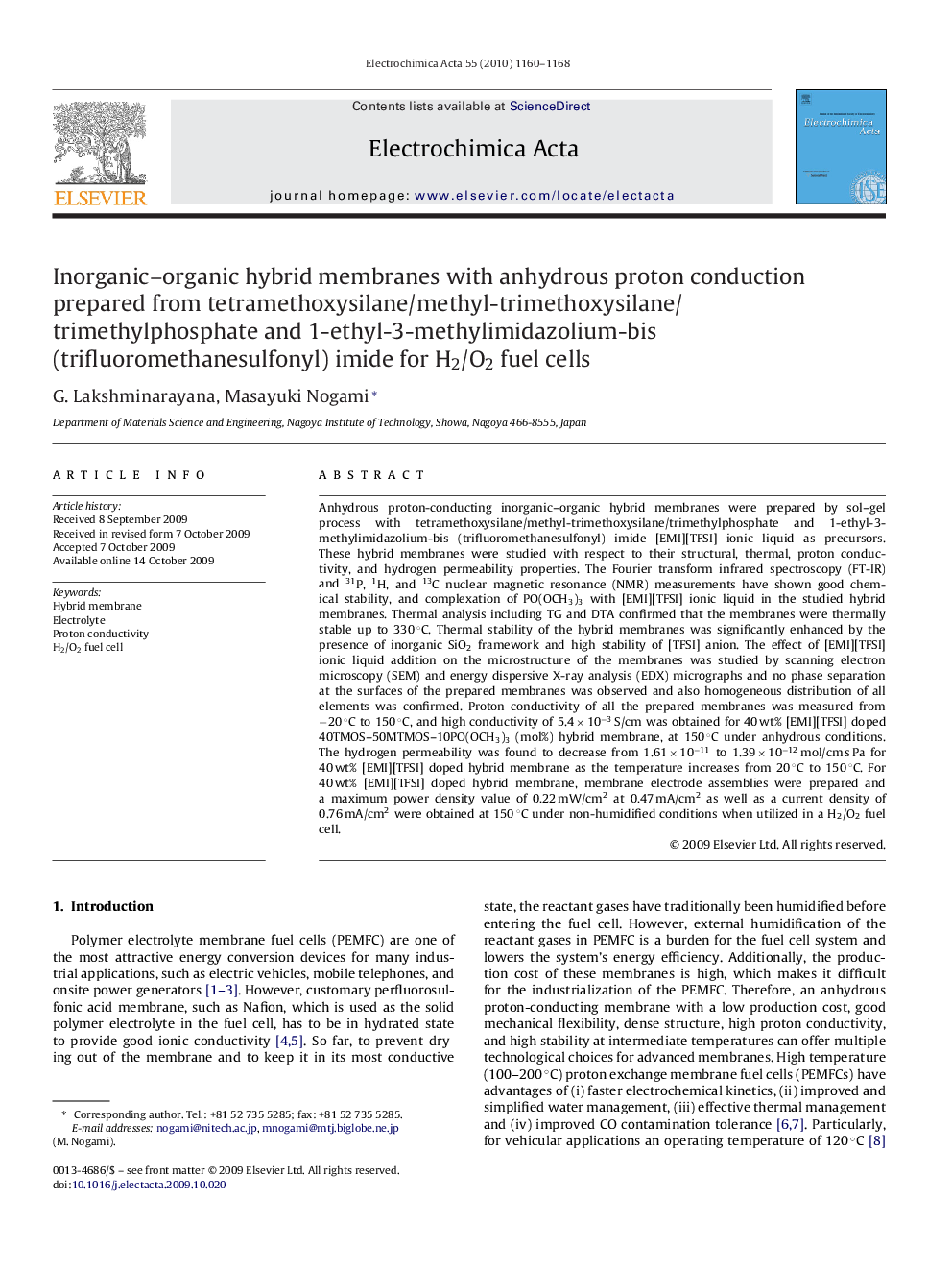| Article ID | Journal | Published Year | Pages | File Type |
|---|---|---|---|---|
| 191255 | Electrochimica Acta | 2010 | 9 Pages |
Anhydrous proton-conducting inorganic–organic hybrid membranes were prepared by sol–gel process with tetramethoxysilane/methyl-trimethoxysilane/trimethylphosphate and 1-ethyl-3-methylimidazolium-bis (trifluoromethanesulfonyl) imide [EMI][TFSI] ionic liquid as precursors. These hybrid membranes were studied with respect to their structural, thermal, proton conductivity, and hydrogen permeability properties. The Fourier transform infrared spectroscopy (FT-IR) and 31P, 1H, and 13C nuclear magnetic resonance (NMR) measurements have shown good chemical stability, and complexation of PO(OCH3)3 with [EMI][TFSI] ionic liquid in the studied hybrid membranes. Thermal analysis including TG and DTA confirmed that the membranes were thermally stable up to 330 °C. Thermal stability of the hybrid membranes was significantly enhanced by the presence of inorganic SiO2 framework and high stability of [TFSI] anion. The effect of [EMI][TFSI] ionic liquid addition on the microstructure of the membranes was studied by scanning electron microscopy (SEM) and energy dispersive X-ray analysis (EDX) micrographs and no phase separation at the surfaces of the prepared membranes was observed and also homogeneous distribution of all elements was confirmed. Proton conductivity of all the prepared membranes was measured from −20 °C to 150 °C, and high conductivity of 5.4 × 10−3 S/cm was obtained for 40 wt% [EMI][TFSI] doped 40TMOS–50MTMOS–10PO(OCH3)3 (mol%) hybrid membrane, at 150 °C under anhydrous conditions. The hydrogen permeability was found to decrease from 1.61 × 10−11 to 1.39 × 10−12 mol/cm s Pa for 40 wt% [EMI][TFSI] doped hybrid membrane as the temperature increases from 20 °C to 150 °C. For 40 wt% [EMI][TFSI] doped hybrid membrane, membrane electrode assemblies were prepared and a maximum power density value of 0.22 mW/cm2 at 0.47 mA/cm2 as well as a current density of 0.76 mA/cm2 were obtained at 150 °C under non-humidified conditions when utilized in a H2/O2 fuel cell.
